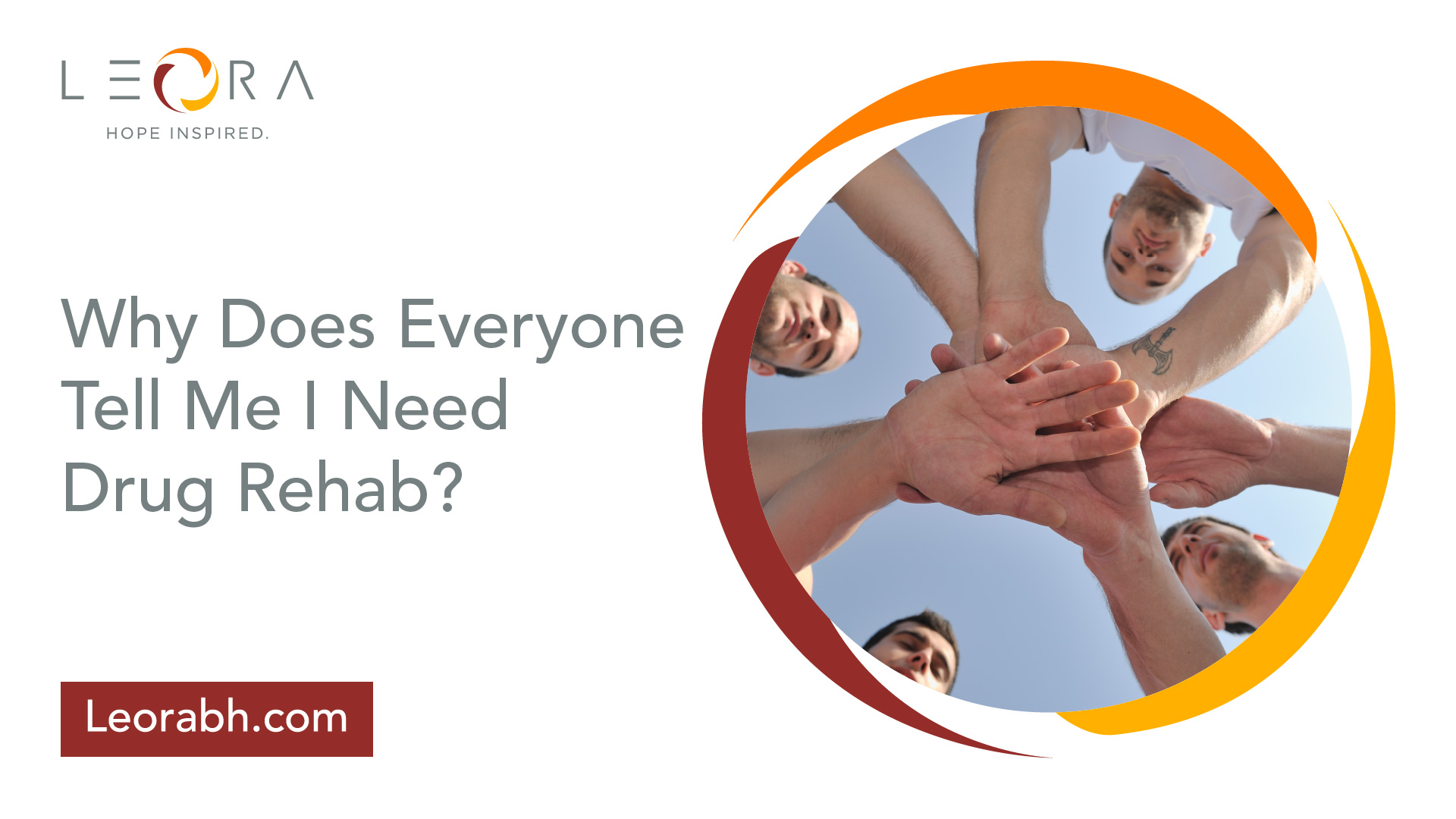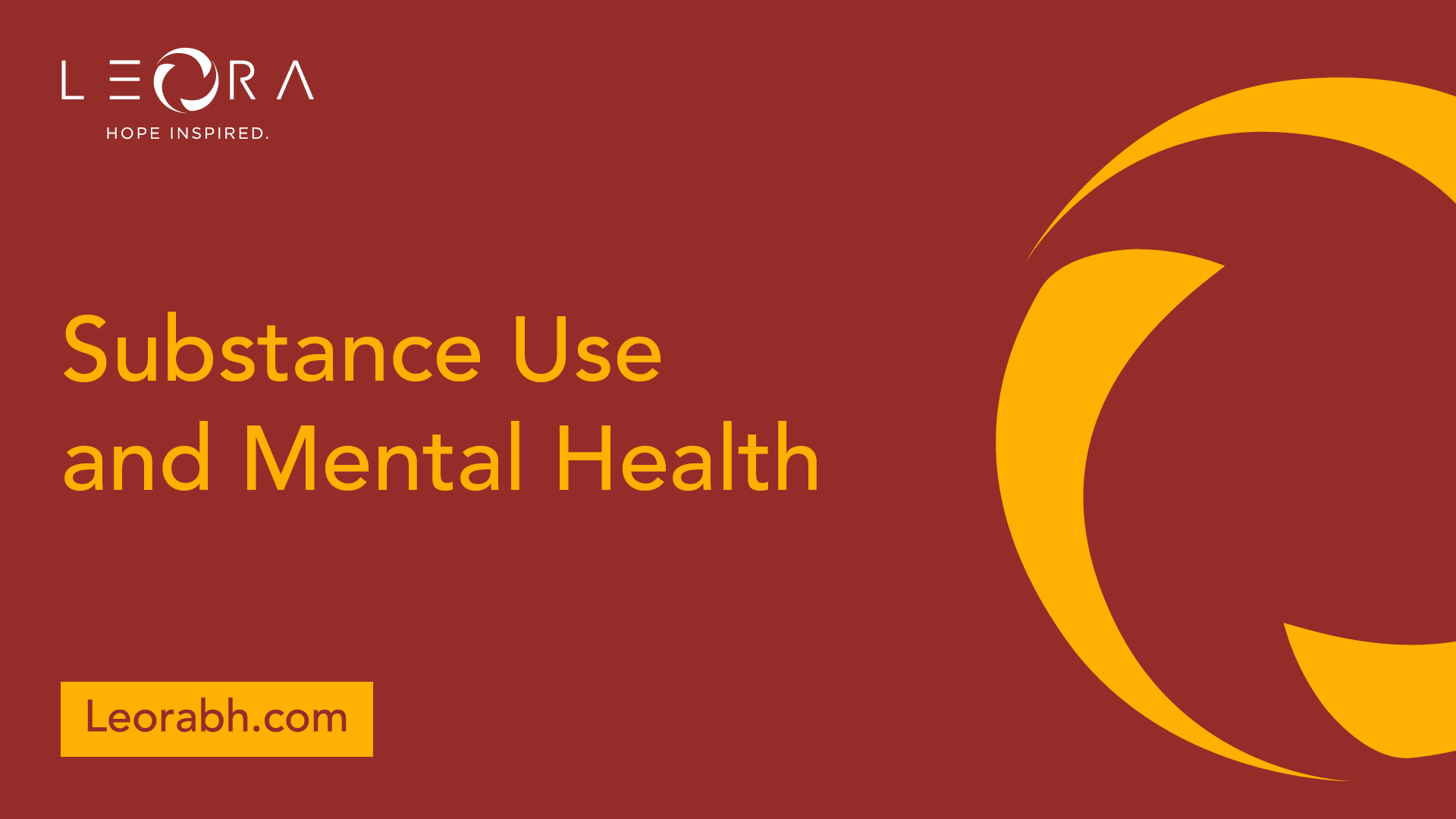Why Does Everyone Tell Me I Need Drug Rehab?
Uncover the need for drug rehab and unravel the concerns surrounding it. Understand the impact on individuals and families.
Understanding Drug Rehab
Drug rehab plays a crucial role in addressing the rising substance use and its impact on adults. The prevalence of drug use among adults, including marijuana, cocaine, methamphetamine, prescription drug misuse, and illicit opioids, has been on the rise in recent years, with the COVID-19 pandemic further exacerbating the issue. In 2020 alone, SAMHSA's National Helpline received 833,598 calls, indicating a significant increase of 27% compared to the previous year [2].

Adults between the ages of 26-49 are particularly affected by the rise in drug use, although young adults aged 18-25 have the highest rates of drug use overall. The various pressures faced by adults in this age range, such as building careers, buying homes, getting married, and having children, can contribute to the use of drugs as a coping mechanism for stress. However, relying on drugs as a crutch can lead to dependence, addiction, and a range of negative consequences, adding even more stress and harm to an individual's life.
The impact of drug use extends beyond the individual, affecting their relationships and the overall well-being of their families. Strained relationships are a common consequence, as drug use can lead to communication breakdowns, conflicts, and a loss of trust. The emotional toll on family members can be significant, as they witness the negative effects of drug addiction on their loved ones. Children, in particular, can be profoundly affected by their parents' drug use, experiencing trauma, instability, and a disrupted family environment.
To address these challenges, drug rehab provides comprehensive treatment programs designed to help individuals overcome substance abuse and addiction. These programs often include a combination of detoxification, counseling, therapy, and aftercare support. The goal is to not only help individuals achieve sobriety but also to address the underlying factors contributing to drug use and equip them with the necessary tools to maintain a drug-free life.
By seeking professional help through drug rehab, individuals can access the support they need to break free from the cycle of addiction and improve their overall well-being. It is a crucial step towards reclaiming their lives and rebuilding healthy relationships with their loved ones.
Effects on Families
When it comes to drug addiction, the impact extends beyond the individual struggling with substance abuse. Families often bear the brunt of the consequences, experiencing strained relationships and significant disruptions in their lives. Understanding these effects is crucial in recognizing the need for drug rehab and seeking appropriate support.
Strained Relationships
Addiction can lead to strained relationships within families and among friends. Trust may break down as loved ones witness the destructive behavior associated with substance abuse. The actions of someone struggling with addiction, such as aggression or attempts to conceal their condition, can lead to depression and strain on the relationships. The constant cycle of broken promises, lies, and disappointment can create emotional distress and erode the foundation of trust.
Families often find themselves caught in a cycle of enabling, where they unintentionally support the addiction by making excuses or providing financial assistance. This dynamic can lead to resentment, frustration, and an overall breakdown in communication. The strain on relationships can extend beyond immediate family members and impact friendships, causing a ripple effect in social circles.

Impact on Children
One of the most vulnerable groups affected by a family member's substance abuse are children. Growing up in an environment where a parent abuses drugs or alcohol can have long-lasting effects on their well-being. These children are more likely to develop substance use disorders later in life.
Children in these situations may witness traumatic events, experience delays in learning, suffer from emotional distress, and develop a poor self-image. The instability and unpredictability that come with addiction can disrupt their sense of safety and security. Moreover, the exposure to substance abuse at a young age increases the risk of these children engaging in drug or alcohol misuse themselves as they enter adolescence and adulthood.
It's important to recognize that addiction affects not only the individual struggling with substance abuse but also their loved ones. The strain on relationships and the impact on children emphasize the need for intervention and comprehensive treatment options like drug rehab. By addressing the addiction and providing support for the entire family unit, it becomes possible to rebuild relationships, heal emotional wounds, and create a healthier environment for everyone involved.
Barriers to Treatment
When it comes to accessing drug rehab, there are several barriers that can prevent individuals from seeking the help they need. Two significant barriers include financial constraints and socioeconomic status.
Financial Constraints
Financial barriers pose a significant challenge for individuals seeking substance abuse treatment. In 2016, approximately 27.6 million people aged 0–64 in the United States did not have health insurance. Among the uninsured individuals, about 44% were white, 33% were Hispanic, 15% were Black, 5% were Asian/Native Hawaiian or Pacific Islander, and 3% belonged to another race. Among these individuals, approximately 15% cited financial barriers such as lack of insurance and concerns about the cost as reasons for not seeking treatment.
The cost of drug rehab can vary depending on the type of treatment program, duration, and location. For individuals without insurance coverage or adequate financial resources, the cost of treatment can be a significant deterrent. Without access to affordable options, many individuals may be unable to pursue the necessary treatment to address their substance abuse issues.
Socioeconomic Status
Socioeconomic status plays a critical role in determining access to and completion of addiction treatment. Individuals with lower socioeconomic status may face various challenges when it comes to entering treatment. Factors such as higher unemployment rates, unstable housing situations, and limited access to healthcare services can hinder their ability to seek and complete addiction treatment.
Studies have shown that certain racial and ethnic groups, such as blacks and Hispanics, are less likely to complete addiction treatment due to socioeconomic factors. These groups may face additional barriers, including discrimination and limited resources, which can further impede their ability to access and benefit from drug rehab programs.
Overcoming Barriers to Treatment
Addressing these barriers requires a comprehensive and multi-faceted approach. Improving access to affordable healthcare options, expanding insurance coverage for addiction treatment, and implementing policies to reduce socioeconomic disparities can help alleviate these obstacles. Additionally, providing support services such as transportation assistance and childcare can help individuals overcome logistical challenges that may arise during treatment.
By understanding and addressing the barriers to drug rehab, we can strive to create a more inclusive and accessible healthcare system. It is essential to ensure that individuals from all backgrounds have the opportunity to seek and receive the treatment they need to overcome substance abuse and embark on a path to recovery.
Accessing Treatment
When it comes to seeking drug rehab, there are various barriers that individuals may face. Two significant challenges that can impede access to treatment are geographic disparities and insurance coverage limitations.
Geographic Disparities
A substantial disparity exists in the geographic distribution of rehab programs in the United States. In 2020, states with high populations had a concentration of rehab facilities, while states with lower populations tended to have fewer facilities. This distribution poses challenges for individuals in rural areas as facilities are more spread out and harder to access.
The lack of nearby treatment options can discourage individuals from seeking the help they need. It may require traveling long distances, which can be burdensome in terms of time, cost, and logistics. This geographic disparity highlights the need for expanding treatment resources in underserved areas to ensure that individuals, regardless of their location, have access to the necessary support and care.
Insurance Coverage
Financial barriers play a significant role in preventing individuals from accessing substance abuse treatment. Lack of insurance and concerns about the cost can be significant deterrents. In 2016, approximately 15% of uninsured individuals cited financial barriers as reasons for not seeking treatment [4].
Insurance coverage limitations can further impede access to treatment, particularly for specific types of addiction treatment. For example, medication-assisted treatment (MAT) for opioid addiction may face restrictions and requirements imposed by states, making it challenging for individuals to receive this evidence-based treatment. Additionally, some insurance plans may not cover MAT, creating additional obstacles for those seeking addiction treatment.
To address the barriers related to insurance coverage, it is crucial to advocate for comprehensive coverage of addiction treatment services. This includes ensuring that insurance plans cover a range of treatment options, such as counseling, medications, and aftercare support. Increased access to affordable insurance options can also help individuals overcome financial barriers and facilitate their journey towards recovery.
By addressing geographic disparities and improving insurance coverage, individuals seeking drug rehab can have better access to treatment resources. It is essential to continue advocating for policies that promote equal access to care, regardless of an individual's location or insurance status. If you or someone you know is in need of drug rehab, consider reaching out to helplines, treatment locators, or mental health organizations that offer resources and support in finding appropriate treatment options.
Retention in Treatment
Retaining individuals in drug rehab treatment is crucial for successful outcomes. It becomes a priority once clients are actively engaged, as various obstacles can arise during treatment, such as lapses, non-compliance with program requirements, and conflicting mandates from different service systems. In this section, we will explore two important factors that impact retention in treatment: lapses and relapses, and family dynamics.
Lapses and Relapses
Lapses in substance use can occur during drug rehab treatment. While they may seem like setbacks, they can actually be used as a therapeutic tool to prevent full relapses. It is essential to address lapses promptly and implement relapse prevention strategies to help individuals regain control and continue their recovery journey.
Relapse prevention strategies involve identifying triggers that may lead to substance use, such as exposure to alcohol and drugs, cravings, encouragement from others to use substances, or personal relapse triggers. By recognizing and addressing these triggers, individuals can develop coping mechanisms and strategies to prevent relapses and sustain their recovery progress.
Family Dynamics
Family dynamics play a significant role in an individual's drug rehab journey. Substance use by family members can pose a threat to a client's recovery. In intensive outpatient treatment (IOT) programs, counselors can consider various interventions to address this issue. These may include directly addressing the issue with the client, educating the client about the risks associated with family substance use, involving the family in the treatment process, or referring the client to family therapy.
Group work is a core component of IOT programs and can heavily influence client retention. Creating group cohesion, establishing clear group norms and expectations, and fostering a supportive environment can help clients feel accepted, supported, and motivated to continue their treatment. The sense of belonging and connection within the group can enhance the client's commitment to the program and increase the likelihood of retention.
Understanding the importance of addressing lapses and relapses, as well as the impact of family dynamics, can contribute to the development of effective retention strategies in drug rehab treatment. By providing support, education, and therapeutic interventions, individuals can be better equipped to navigate potential challenges and maintain their progress towards recovery.
Co-Occurring Disorders
When it comes to substance use disorders (SUDs), it is not uncommon for individuals to also experience other mental health disorders simultaneously. These co-occurring disorders can have a profound impact on a person's well-being and require specialized treatment approaches. In this section, we will explore the relationship between substance use and mental health disorders, as well as the treatment approaches available for individuals with co-occurring disorders.

Substance Use and Mental Health
People with SUDs may also have other mental health disorders, such as anxiety disorders, depression, ADHD, bipolar disorder, personality disorders, and schizophrenia. It is important to note that having a SUD and a mental disorder does not necessarily imply that one caused the other. However, research suggests three possibilities to explain why SUDs and other mental disorders may occur together.
When someone has a SUD and another mental health disorder, it is generally recommended to treat both conditions simultaneously rather than separately. This approach ensures that appropriate and comprehensive treatment is provided. Accurate diagnosis is crucial, and healthcare providers should use comprehensive assessment tools to reduce the chance of missing a diagnosis and deliver the right treatment. Tailoring treatment, which may include behavioral therapies and medications, to an individual's specific combination of disorders and symptoms is essential.
Treatment Approaches
Treating individuals with co-occurring substance use and mental disorders requires a comprehensive and individualized approach. Behavioral therapies have shown promise in treating these individuals and may be recommended alone or in combination with medications. Effective examples of behavioral therapies for adults with SUDs and different co-occurring mental disorders include:
- Cognitive Behavioral Therapy (CBT): This therapy focuses on identifying and modifying negative thoughts and behaviors associated with both substance use and mental health disorders. It helps individuals develop coping strategies and problem-solving skills.
- Dialectical Behavior Therapy (DBT): DBT is particularly effective for individuals with borderline personality disorder and substance use disorders. It combines elements of CBT with mindfulness practices and emphasizes enhancing emotional regulation and interpersonal skills.
- Motivational Interviewing (MI): MI is a client-centered approach that helps individuals resolve their ambivalence about changing their substance use behavior. It focuses on enhancing motivation and commitment to treatment.
Effective medications are also available to treat addiction to substances like opioids, alcohol, and nicotine, as well as to alleviate symptoms of many other mental disorders. Some medications can be useful in treating multiple disorders, providing relief for both substance use and mental health symptoms.
To access mental health treatment services for substance use and co-occurring mental disorders, individuals can contact the Substance Abuse and Mental Health Services Administration (SAMHSA) National Helpline at 1-800-662-HELP (4357), visit the SAMHSA online treatment locator, or text their ZIP code to 435748. Additional resources are available through the National Institute of Mental Health (NIMH) and the National Cancer Institute's Smokefree.gov website [6].
By addressing both substance use and mental health disorders concurrently, individuals with co-occurring disorders can improve their overall well-being and increase their chances of successful recovery. A comprehensive treatment approach, including behavioral therapies and appropriate medications, can provide the necessary support to individuals on their journey towards healing and recovery.
References
Find Your Inner Light
Related Articles
Contact Us
Leora Behavioral Health offers a comprehensive addiction treatment programs to help you get your life back on track.
Our trained professionals will work with you to develop a personalized treatment plan that meets your unique needs. If you or someone you know is struggling with addiction, reach out to Leora Behavioral Health today.


.svg)





.svg)
.svg)
.svg)
.svg)